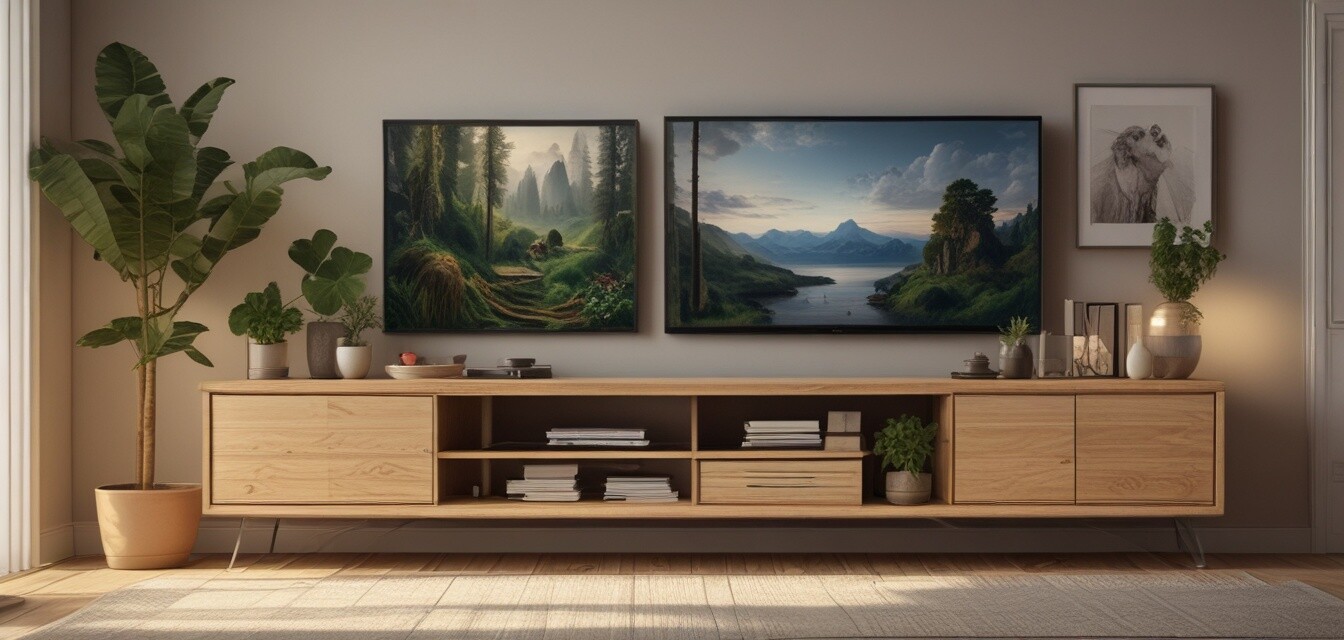
The Influence of Eco-Conscious Brands in Furniture Design
Key Takeaways
- Eco-conscious brands are leading innovative changes in furniture design, particularly with TV stands.
- Sustainable materials such as reclaimed wood, bamboo, and recycled metal are becoming standard in production.
- The trend towards minimalism and multifunctionality is reshaping consumer expectations in furniture.
- Environmental certifications and transparent supply chains increase consumer trust and brand loyalty.
- Upcycling and modular designs are popular, catering to dynamic living spaces.
As we move toward a more sustainable future, eco-conscious brands are bringing significant changes to the landscape of furniture design. From innovative materials to thought-provoking designs, these brands focus on reducing environmental footprints while meeting modern functional needs. This article delves into how eco-conscious brands are shaping the evolution of furniture design, particularly in TV stands.
Shifting Consumer Priorities
Lorem ipsum dolor sit amet, consectetur adipiscing elit. Pellentesque sit amet sapien vel eros tempor auctor. Integer placerat elit a vestibulum varius. Curabitur sollicitudin sem ac dui lobortis, non interdum nunc gravida. Egestas nisl id efficitur molestie, eco-friendly living is no longer just a trend but a lifestyle choice for many consumers.
The rise of sustainable materials
Furniture companies are increasingly utilizing sustainable materials, enhancing aesthetic appeal while being environmentally responsible. Here’s a look at the most used materials:
| Material | Description | Benefits |
|---|---|---|
| Reclaimed Wood | Wood repurposed from old buildings and furniture. | Reduced deforestation, unique character. |
| Bamboo | A fast-growing plant used as a wood substitute. | Highly renewable, durable, lightweight. |
| Recycled Metals | Metals sourced from discarded products. | Less energy-intensive, prevents landfill waste. |
| Eco-friendly Fabrics | Textiles made from organic or recycled materials. | Biodegradable, less harmful to health and environment. |
Design Innovations
With the shift in focus towards sustainability, design innovations have emerged that reflect changing consumer preferences. Eco-conscious brands now emphasize:
- Minimalism: Clean lines and simplicity are essential in modern furniture design, aiming for fewer materials that serve multiple functions.
- Modular designs: Furniture pieces that can be reconfigured or expanded as needed, catering to smaller living areas.
- Multifunctionality: Items that combine different uses, such as a TV stand doubling as a storage unit.
Market Impact of Eco-Conscious Brands
As more consumers demand sustainability, traditional brands are feeling pressure to adapt. Eco-conscious brands are setting new market standards. Recent studies indicate:
Over 60% of consumers now prioritize sustainability when making purchase decisions.
Brand Trust Through Transparency
Eco-conscious brands often promote transparency in their supply chains. Consumers appreciate knowing the origins of the materials and the ethics behind production. This leads to higher brand loyalty and trust.
Conclusion
In conclusion, eco-conscious brands are set to continue their influence on the furniture design landscape, particularly with TV stands and media storage solutions. The focus on sustainability, innovative designs, and transparency will redefine how consumers choose their furniture, shifting towards more responsible choices. Keep an eye on this evolving trend as eco-friendly living becomes a central aspect of home decor.
Pros
- Reduced environmental impact through sustainable practices.
- Unique aesthetic appeal with diverse design options.
- Support for fair labor practices and ethical manufacturing.
Cons
- Potentially higher costs compared to conventional furniture.
- Limited availability in certain designs and styles.
- Perception of durability in some recycled materials.
For more insights into sustainable furnishings, explore our buying guides or check out our dedicated section on corner TV stands and other modern solutions to cater to your needs.